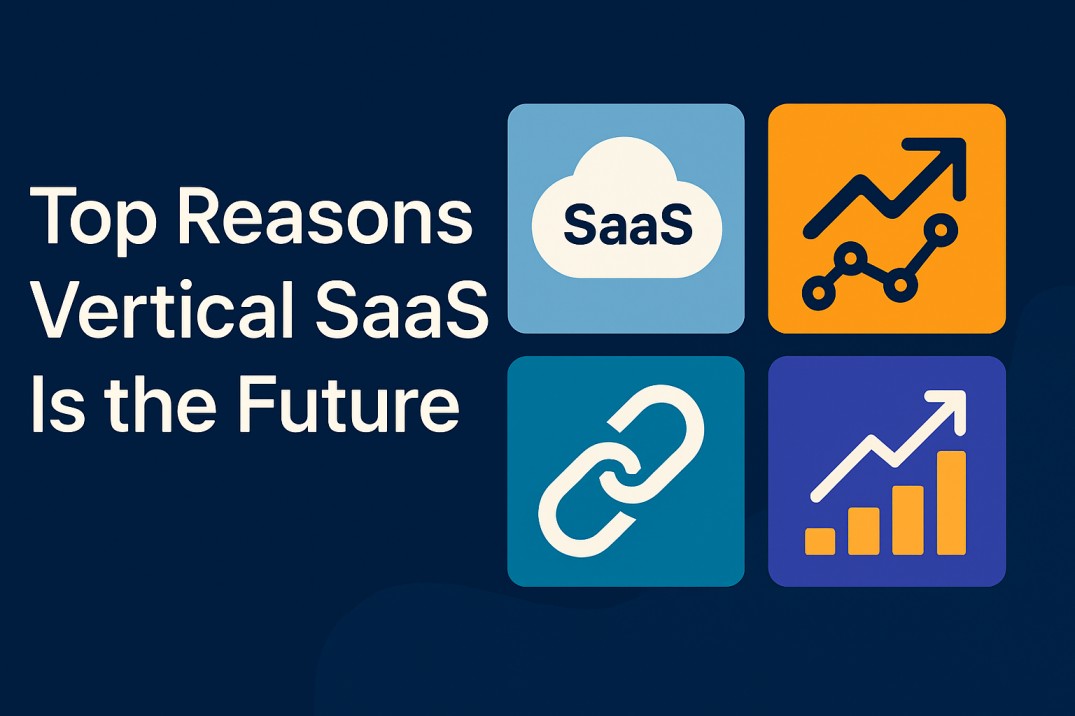In the rapidly evolving software-as-a-service (SaaS) landscape, a significant shift is underway. While horizontal SaaS platforms like Salesforce, HubSpot, and Microsoft 365 continue to dominate the market with their broad, cross-industry applications, vertical SaaS solutions are increasingly gaining traction as businesses seek more specialized tools tailored to their specific industry needs.
What is Vertical SaaS?
Vertical SaaS refers to cloud-based software solutions designed to serve the unique needs of specific industries or verticals. Unlike horizontal SaaS platforms that offer general-purpose functionality applicable across multiple sectors, vertical SaaS products provide specialized features, workflows, compliance measures, and terminology tailored to particular industries like healthcare, real estate, construction, or financial services.
Why Vertical SaaS is Gaining Momentum
1. Industry-Specific Functionality
One of the primary drivers behind the rise of vertical SaaS is its ability to address industry-specific pain points that horizontal solutions often overlook. For example, while a general project management tool might work adequately for many businesses, construction companies benefit more from platforms like Procore that incorporate specialized features for building information modeling (BIM), safety compliance, and subcontractor management.
2. Built-in Regulatory Compliance
Most industries are heavily regulated, and traditional software solutions have a hard time meeting these regulatory restrictions even reasonably well. Vertical SaaS has usually considered much of the compliance surrounding an industry in the development of their application. For example:
* Healthcare vertical SaaS that are built HIPAA-compliant (Athenahealth, Kareo)
* Financial services solutions that are built with KYC, AML and many other regulations included
* Legal practice management solutions that include client confidentiality and conflict-checking
3. Lower Cost and Implementation Time
Implementing a horizontal SaaS application will often incur extensive customization costs to address industry-specific needs thereby increasing implementation duration. Vertical SaaS applications are often able to provide quicker time-to-value while including industry-specific workflows, terminology, and best practices as part of their platform.
4. Better Data Analytics and Benchmarking
Vertical SaaS vendors can collect industry-specific data that enables them to provide better benchmarking and analytics because that data can be aggregated and analyzed together. This allows companies to understand not only how they compare against statutory benchmarks but, how they compare to their peers in their actual industry, which is not always possible with horizontal platforms.
The Future of Vertical SaaS
As vertical SaaS continues to develop, there are some trends that will have a considerable impact.
One such trend is the combination of AI and machine-learning algorithms into vertical SaaS solutions. With industry-specific datasets, AI and machine learning can help to create more reliable predictions, intelligent automation, and deeper insights specific to an industry.
Another growing trend is the growing interest in API-first architectures that make vertical SaaS solutions easier to integrate with existing tools in a company tech stack. This will enable vertical SaaS to avoid data silos and allow companies to have a fully integrated stack of APIs so different platforms can work together.
There is also interest in micro-vertical solutions—highly specialized tools that focus on small segments of industries rather than the entire industry. For example, instead of serving the entire healthcare industry, some SaaS solutions in healthcare focus only on dentists, veterinarian practices, or mental health practices. With this level of focus, the SaaS tool can have even more specific features and workflows.
Finally, we are starting to see horizontal SaaS players going vertical. Across vertical SaaS, specifically, many companies in more general areas (horizontal SaaS-based) are uncovering opportunities to serve specific industries. In response, they are both re-launching their solutions as industry-specific and acquiring vertical SaaS companies to be more competitive and add value.
Conclusion
Vertical SaaS is the latest phase in the evolution of software towards specialization and value delivery. Businesses around the world are looking for software solutions that align closely with their needs, so vertical SaaS companies are well positioned to take market share with their industry-focused solutions.
For businesses looking at SaaS solutions, the choice between horizontal and vertical options need not be mutually exclusive. Many businesses see great value in deploying industry-specific vertical solutions focused on their core processes, while using horizontal platforms for other more generic business functions.
What is clear is that in SaaS, specialization is the future. As the vertical SaaS market continues to mature, we should expect to see more innovative, industry-specific solutions that deliver huge value across all business sectors.
The Truth About the Metaverse in 2025
Explore more tech updates here → Click here


1 thought on “Top Reasons Vertical SaaS Is the Future”